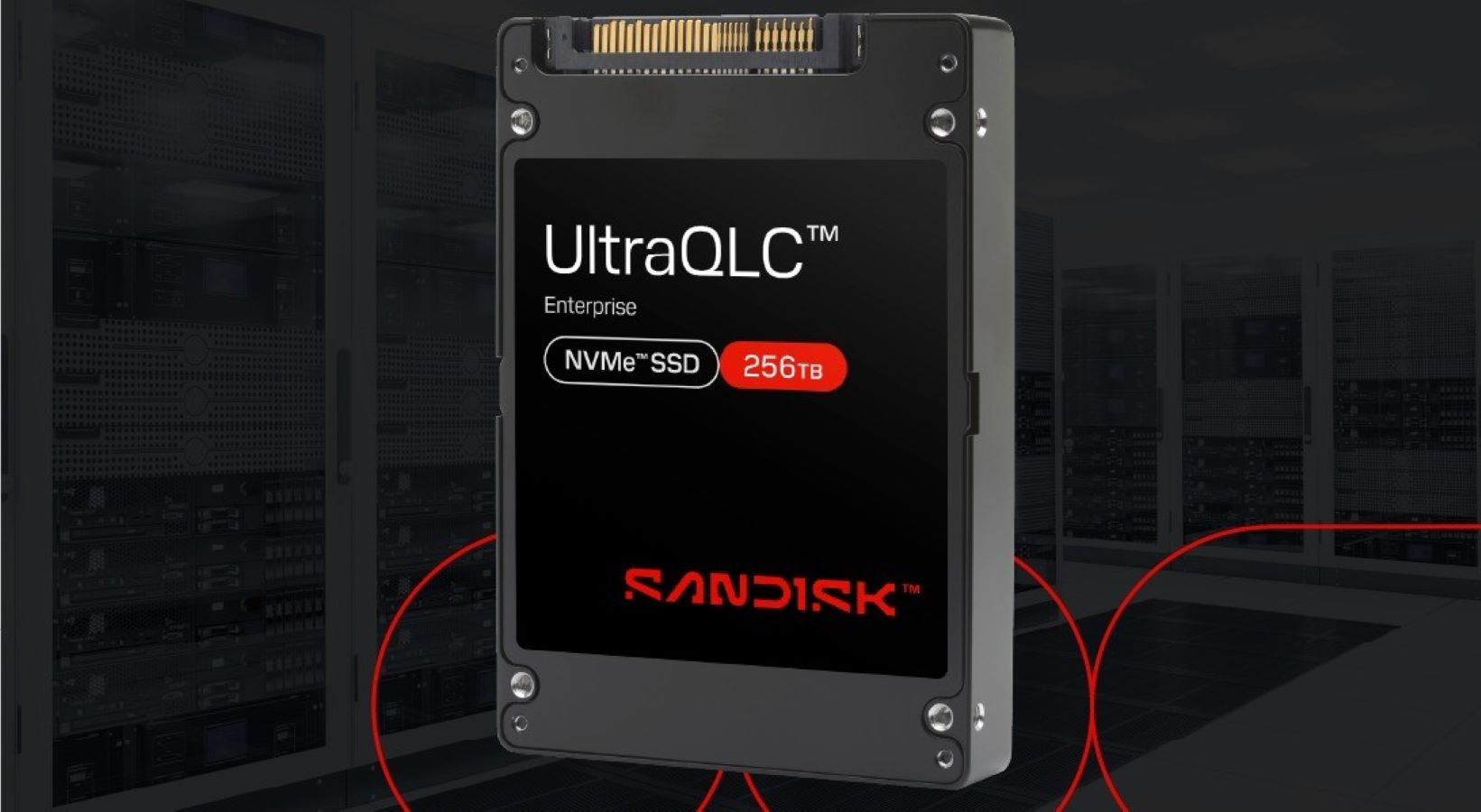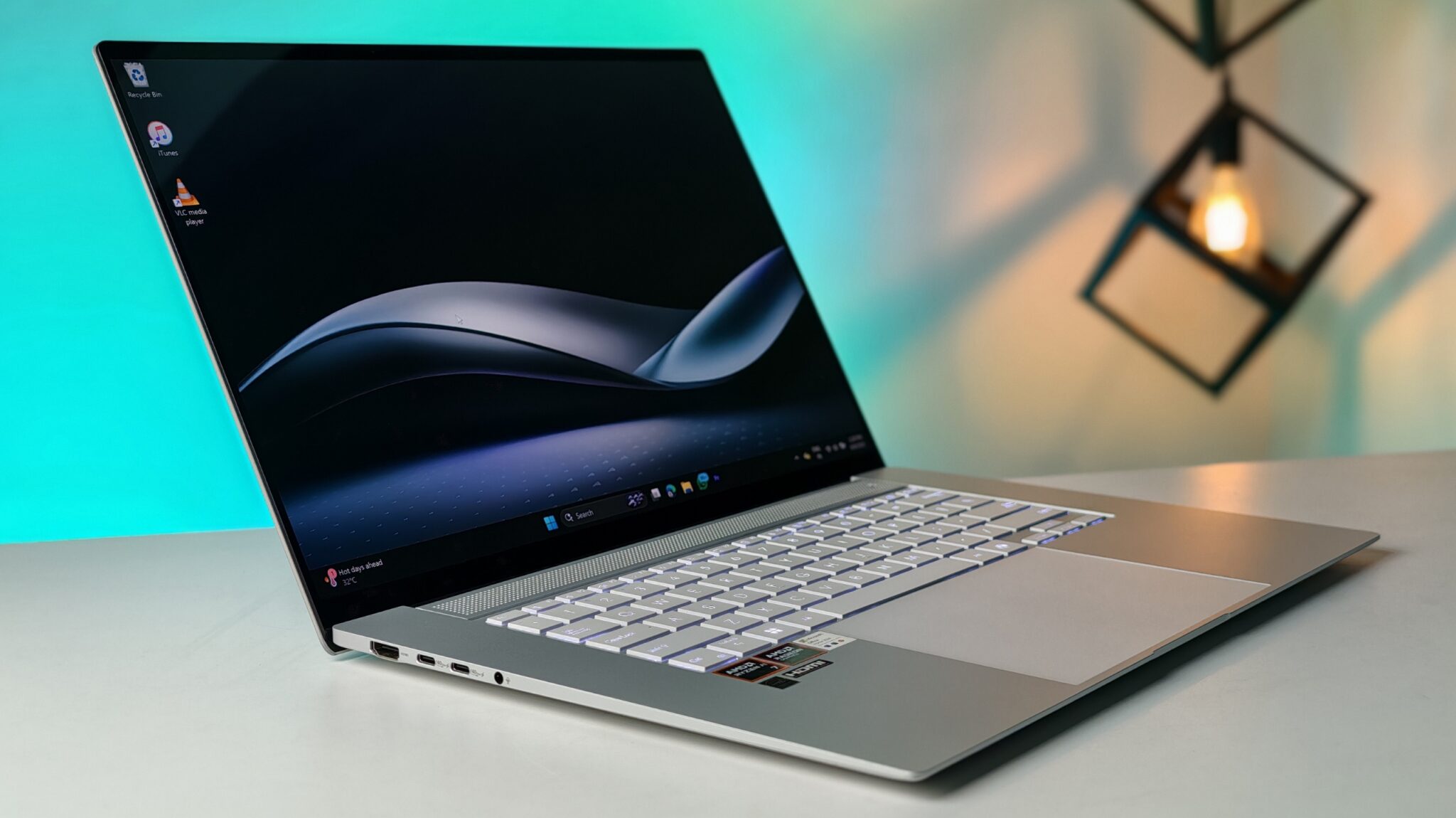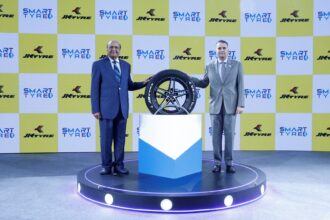SanDisk, a brand of storage giant Western Digital, has demonstrated a massive 256TB enterprise Solid-State Drive (SSD) at the Flash Memory Summit 2025 in California. This new drive uses a storage protocol called NVMe (Non-Volatile Memory Express), which allows for very fast data access. It is specifically built for the growing demands of Artificial Intelligence (AI) and large-scale cloud data centers. The drive is based on SanDisk’s new UltraQLC system, a new approach to building high-capacity flash storage.
Key Takeaways
- New Product: SanDisk showed a 256TB NVMe SSD for enterprise customers. A 128TB version, the SN670, was also announced.
- Core Technology: The drive uses SanDisk’s UltraQLC system, which combines BiCS8 QLC NAND memory with custom hardware and software.
- Primary Use: It is intended for AI-related tasks like feeding data to models and for building fast AI data lakes, which are huge storage pools for training AI.
- Availability: Both the 256TB and 128TB drives are scheduled to be available in the first half of 2026 in the U.2 form factor, a common standard for data center hardware.
The Technology Behind the Capacity
The new 256TB SSD is made possible by several developments within SanDisk’s UltraQLC system. The foundation is QLC (Quad-Level Cell) NAND memory. NAND is the type of flash memory used in all SSDs. QLC stores four bits of data in every memory cell, which allows manufacturers to pack more storage into a smaller physical space. SanDisk uses its latest BiCS8 QLC memory, which further increases storage density.
To handle this density, SanDisk developed Direct Write QLC. In many SSDs, data is first written to a small, fast buffer (an SLC buffer) before being moved to the main storage area. The new system writes data directly to the main QLC memory, which speeds up the process and improves performance, especially for the heavy, continuous writing common in AI applications.
The system also focuses on power management. It includes a feature that adjusts its operating frequency based on the workload. This helps the drive deliver high performance without drawing too much power, a major concern in data centers that run thousands of drives. These improvements are designed to lower the Total Cost of Ownership (TCO) for hyperscale cloud providers by fitting more storage into the same space and using less electricity.
Why Data Centers Need Such Large Drives
The rapid growth of AI has created a need for storing and quickly accessing enormous amounts of data. AI models are trained on datasets that can be petabytes in size (one petabyte is about 1,000 terabytes). Storing this information on many smaller drives can be complex and costly.
A single 256TB SSD can replace multiple lower-capacity drives. This consolidation saves physical rack space in a data center, reduces the number of required cables and connections, and lowers overall power consumption and cooling costs. For companies running massive AI and cloud operations, these savings can be substantial. The drive is designed for “read-intensive” workloads like AI data lakes, where data is written once and read many times.
Frequently Asked Questions (FAQs)
Q1: What is a 256TB SSD used for?
A: A drive of this size isn’t for personal computers. It’s built for enterprise data centers that handle huge amounts of information for cloud storage, big data analytics, and especially for training and running large AI models.
Q2: What is QLC NAND and is it reliable?
A: QLC is a type of flash memory that provides high storage density at a lower cost. In the past, its endurance (how many times it can be rewritten) was a concern. However, SanDisk’s new UltraQLC system includes technology to manage data and reduce wear, making it reliable for its intended enterprise use, particularly for workloads that involve reading data many times.
Q3: Will the SanDisk 256TB SSD be available for home computers?
A: No, this is an enterprise-grade product made for the specific hardware, cooling, and heavy-duty needs of data centers. It won’t be sold for consumer desktops or laptops.
Q4: When can companies buy the SanDisk 256TB SSD?
A: SanDisk announced that the 256TB SSD, along with a 128TB version, will be available for purchase in the first half of 2026.
Q5: How much will the 256TB SSD cost?
A: Official pricing hasn’t been released. Enterprise hardware like this is usually bought in bulk by large companies, and the price per drive is typically thousands of dollars.


















